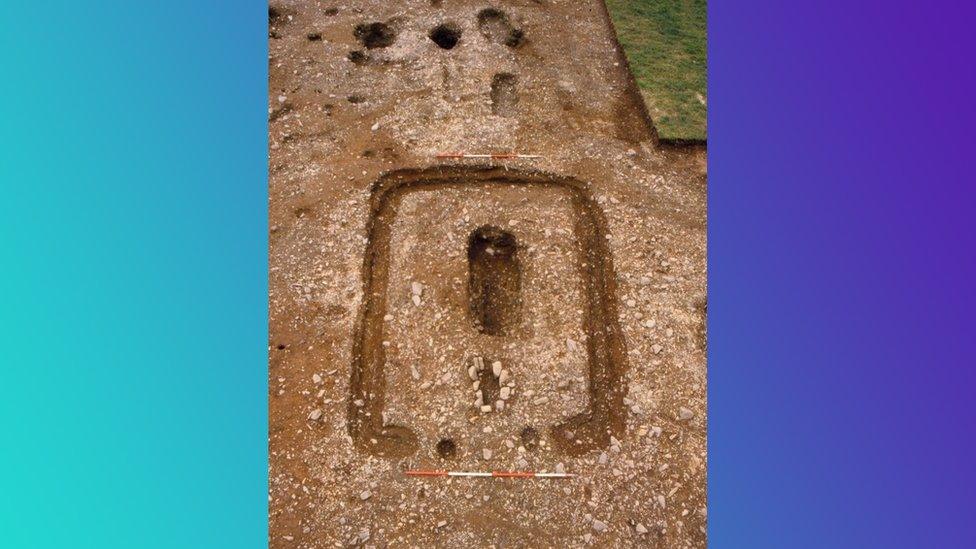Archaeology: The final resting place of British kings discovered
- Published
- comments

An excavated 'enclosed grave', a possible royal burial, at Plas Gogerddan, Wales
Scientists have found what might be as many as 60 royal graves at 20 places across the west of England and Wales.
Before the discovery only one resting place of a post-Roman burial of a monarch from the Dark Ages (approximately 410 AD-1000 AD) had been discovered (although nine Anglo-Saxon royal graves have been found on previous excavations).
Now at least 20 possible burial sites, some containing two or three graves have been discovered in Wales, Cornwall, Devon and Somerset.
A statue of the famous Alfred the Great - King of the Anglo-Saxons - stands in Winchester, where he was originally buried in 899. But they were moved many times and where they are now is unknown
The research was done by Professor Ken Dark of the University of Reading and Spain's University of Navarra who published his findings in the Journal of the Royal Society of Antiquaries of Ireland.
Professor Darks says the burial grounds appear to be from the fifth and sixth centuries AD.
During this period Britain was made up of a patchwork of kingdoms no bigger than a county.
The East was ruled by Anglo-Saxon kings, while in the West, the Royal dynasties were descendants of people who lived in Roman Britain, also known as Celtic Britons.
Professor Ken Dark told Newsround that there are many thousands of British Celtic dark age burial sites, but that usually they all look very much the same.
The professor said he worked out that these were royal graves because of an unusual design which shows a higher status than other Dark Ages burial grounds.
They all have a rectangular or square ditched enclosure which could have originally had gates and fencing.
Amongst thousands of burials which are the same, there are just a few which are enclosed by ditches and are obviously meant to be special.
"We know that the main political rank in those societies among those people was royalty so if we see some burials standing out in this way, it's possible that they are the burials of kings."
Professor Dark also so said there were no other contenders for burial sites of kings, even though they know how many kings there were at that time.
He was also able to compare them to similar graves in Ireland which are widely thought to belong to royalty.
Tintagel in Cornwall where one of the burial sites was discovered has links to the stories of King Arthur
Among the most important burials are of those identified in Caernarfon and Anglesey (in North Wales) and the famous site of Tintagel in Cornwall, a place often associated with the legend of King Arthur, medieval, mythological figure from from this time.
"This is a period of history that we know very little about. In fact it's possibly a period of history we know least about," Professor Dark told Newsround.
"Before this there were only two possible burial sites of Celtic British rulers from this period that we knew of, but now there may be over twenty."
- Published25 November 2021
- Published19 May 2022
- Published13 September 2018
